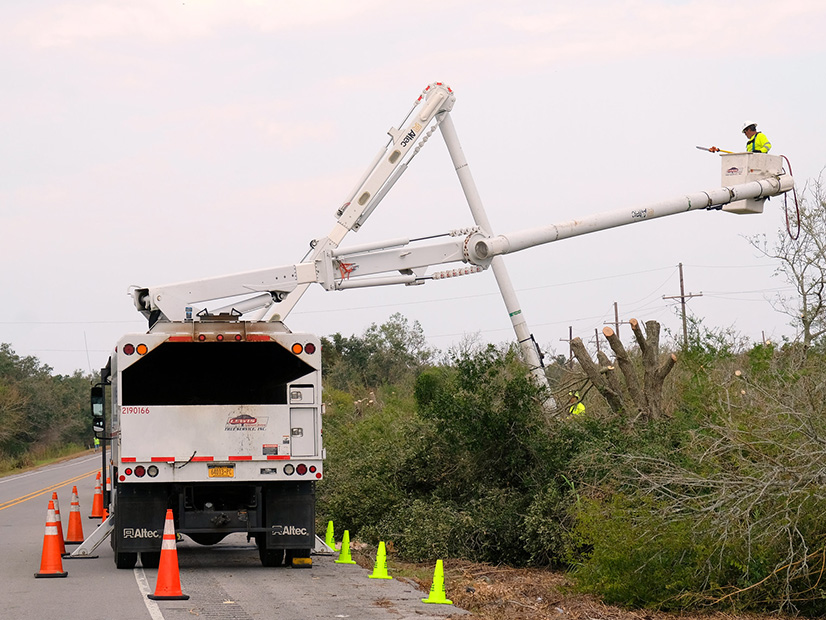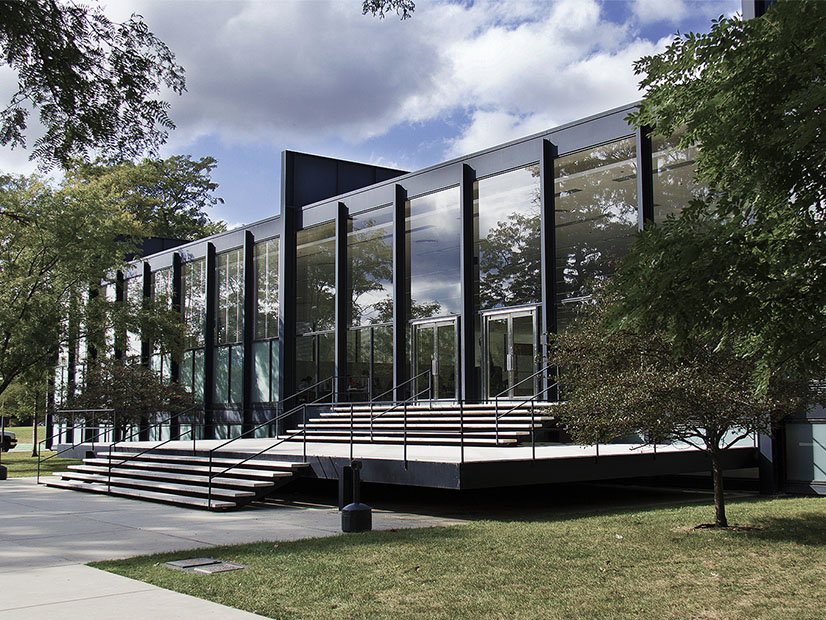
Experts say the electric grid along the Gulf of Mexico needs sturdier construction, new technology and microgrids to avoid lengthy outages from increasingly common severe weather events.
Last week’s mass outages in Louisiana following Hurricane Ida inspired a replay of the outrage following February’s winter storms that plunged millions of Texans into darkness for days. Even in the earliest stages of the disaster, leaders in New Orleans — where the entire city lost power after the storm cut all eight transmission corridors — had begun to question why Entergy (NYSE:ETR) seemed so unprepared for the disaster. (See Entergy Investigations Certain to Follow Hurricane Ida Restoration.)

For Mohammad Shahidehpour, director of the Illinois Institute of Technology’s (IIT) Center for Electricity Innovation, the latest disaster is another in a growing list of wakeup calls unheeded by regulators and policy makers. In an op-ed published in The Hill Aug. 31, he said February’s crisis “wasn’t just a failure of infrastructure, it was a failure of infrastructure planning.”
“We worried about Texas, but now that it’s over I don’t think [policy makers] look back to say, ‘How are we going to prevent the next one?’” Shahidehpour told ERO Insider. “Same thing here — what’s happening in Louisiana is not the first time we have witnessed an extreme weather event in that region, and [I am skeptical] whether the local decision makers will do some substantial strengthening to make sure that [the next one] does not damage the system the way this one did.”
Microgrids to Mitigate Disaster
Shahidehpour said utility planners, regulators and political leaders should engage in a rethink of the North American electric grid.
He said microgrids, each handling a fraction of load, could lessen dependence on long, vulnerable transmission lines and make the grid less exposed to breakdown if generators go offline in a storm. Local microgrid controllers, operating independently, can pick up slack when one generator fails, in a scenario that Shahidehpour likened to a formation of planes.
“In a fleet of aircraft, each pilot can decide [what to do] in case of emergency … the head pilot sitting in the first aircraft is not going to be controlling [them] all,” Shahidehpour said. “We need to do the same thing for our grid [and] come up with individual pilots to decide what’s important in case of an emergency … and what they need to do to save their craft. … Right now, that’s not the case: they’ve got 20 aircraft and often one pilot for the entire fleet.”
Shahidehpour acknowledged that it would be difficult for a microgrid fleet to handle New Orleans’ peak 1.2-GW load — though he said the existing grid may also be unsuited to keep pace with the ongoing electrification of society.
“We need to teach people that electricity doesn’t have to be consumed all at once,” Shahidehpour said. “If you’re in a high-rise, and there are, let’s say, 100 apartments, they all do not have to charge their phones or run their dishwashers at the same time. Yes, they all want to get it done by the morning, but you can set up a system where one is done at 2:00, one is done at 3:00, and one is done at 2:30 — all done [by] the time the customers want and [dispersing] the load to the extent that you don’t have to make the existing utility system bigger and bigger.”
Volunteer group the Footprint Project last week brought mobile solar units to shelters in rural southern Louisiana to supplant gas generators. The group hopes the sight of solar panels powering recovery efforts will inspire communities to build back greener and closer.
Beefier Tx Facilities
Hurricane Ida laid bare a need for utilities to be more realistic about the lifespans of their existing transmission in a changing climate, others argue.
Portland, Ore.-based energy consultant Robert McCullough said it’s no longer sensible for utilities along the Gulf coast to assume a 30-year lifespan for transmission facilities “given the high probability that the next Category 4 hurricanes will destroy even more equipment built to the previous engineering standard.” He said today’s equipment has been built to outdated safety standards and Entergy “overstates” the lifetime of its transmission and distribution equipment.
McCullough noted that four hurricanes have struck the Gulf coast in the past year. He estimated that Ida destroyed 8.2% of Entergy New Orleans’ almost $20 billion transmission and distribution assets.
Hurricane Ida destroyed more than 30,000 poles in Entergy territory, compared to Katrina’s about 17,000, according to the utility. Combined with the 2020 destruction from hurricanes Laura (more than 14,000 poles) and Zeta (about 2,000 poles), 2020 and 2021 contain the most dramatic spike in grid devastation from hurricanes.
Entergy Louisiana is seeking permission from the Louisiana Public Service Commission to recover nearly $1.6 billion from ratepayers for Hurricane Laura, $215 million for Hurricane Delta and $177 million for Hurricane Zeta. The storms’ succession was so rapid that Entergy combined the three requests for recovery along with Winter Storm Uri-related costs.
“Many utilities wait until older equipment is destroyed rather than preemptively replacing equipment. There are understandable regulatory reasons for doing so: it is easier to recover the cost of storm damage than it is to argue for early retirement of existing assets,” McCullough said in a memo to clients. “Colloquially, it is often better to ask forgiveness than to seek permission, but this does not produce optimal results for either the utility or its customers,”
McCullough said utilities should “break the cycle of seeking after-the-fact regulatory approval for storm damage” and “adopt depreciation schedules that reflect a more accurate estimate of the life of transmission and distribution equipment subjected to extreme storm weather.”
He said a practice of replacement before failure will save “tremendous social cost.”
“Hurricane Ida demonstrates once again that the cost of a prolonged outage eventually will dwarf the actual replacement expense of poles and conductors,” he said.
Entergy said its new transmission projects are constructed to withstand winds up to 150 mph. But the utility has repeatedly declined to specify the age of the eight New Orleans lines that failed during the storm. On Sept. 3, it detonated cables from the collapsed and rusted transmission tower in Harahan, La., to clear the Mississippi River.
Construction firm Burns and McDonnell has been forced to halt upgrade work twice on Entergy’s 16-mile, 230-kV Waterford-to-Vacherie line because of Hurricane Laura and Hurricane Ida. The line will carry power from the nearby Waterford 3 nuclear unit, which was offline for several days following the hurricane.
Entergy spokesman Neal Kirby said the company had no immediate response to the McCullough report.
“With regard to grid planning and hardening practices, Entergy’s infrastructure hardening and resiliency investments help protect the electrical system from destructive weather and are developed to provide the best value to customers. Since the beginning of 2016, Entergy has completed $12.6 billion in transmission and distribution construction and other investments and will continue to make significant investments to continually repair and enhance the company’s infrastructure,” Kirby said. “We have spent approximately $1 billion systemwide in recent years upgrading plants and substations to new hardening standards following hurricanes. While ensuring the resilience of our infrastructure has always been a primary focus, we recognize that we must accelerate our efforts in light of increasingly frequent and severe weather events. We will continue to refine our understanding of where the specific risks attributable to climate change are expected to become more severe in the years and decades ahead and focus our hardening efforts accordingly.”
Tech Assists
Adrienne Mouton-Henderson, deputy director of policy innovation for the Renewable Energy Buyer’s Alliance, said resilience also would benefit from grid enhancing technologies (GETs), such as advanced power flow control, dynamic line ratings and topology optimization.
“GETs can increase grid flexibility and reliability, especially during extreme weather events, such as the wildfires in California, and Hurricane Ida,” she said at a press briefing Wednesday in advance of a FERC technical conference Friday on using shared savings to encourage utilities to deploy such technology.
Hudson Gilmer, CEO of LineVision, which sells overhead line monitoring technologies, said GETs are no replacement for hardening of assets, such as moving from steel poles to concrete and improving wind tolerance. Florida Power & Light reported that its recovery from Hurricane Irma in 2017 was four times faster than it was following Hurricane Wilma in 2005, thanks to $3 billion in grid-hardening investments. (See Power Restored for 97% of Customers in Irma’s Wake.)
But Gilmer said GETs “individually and collectively result in a much more resilient grid.
“They can allow grid operators to route around outages much more flexibly and quickly. They can increase capacity on existing lines, and they can actually redirect flow,” he said during the briefing, sponsored by the WATT Coalition. “[That] is absolutely part of the solution to increasing resiliency and also monitoring to understand the condition and detect anomalies that might be able to be addressed before severe weather rolls in.”


